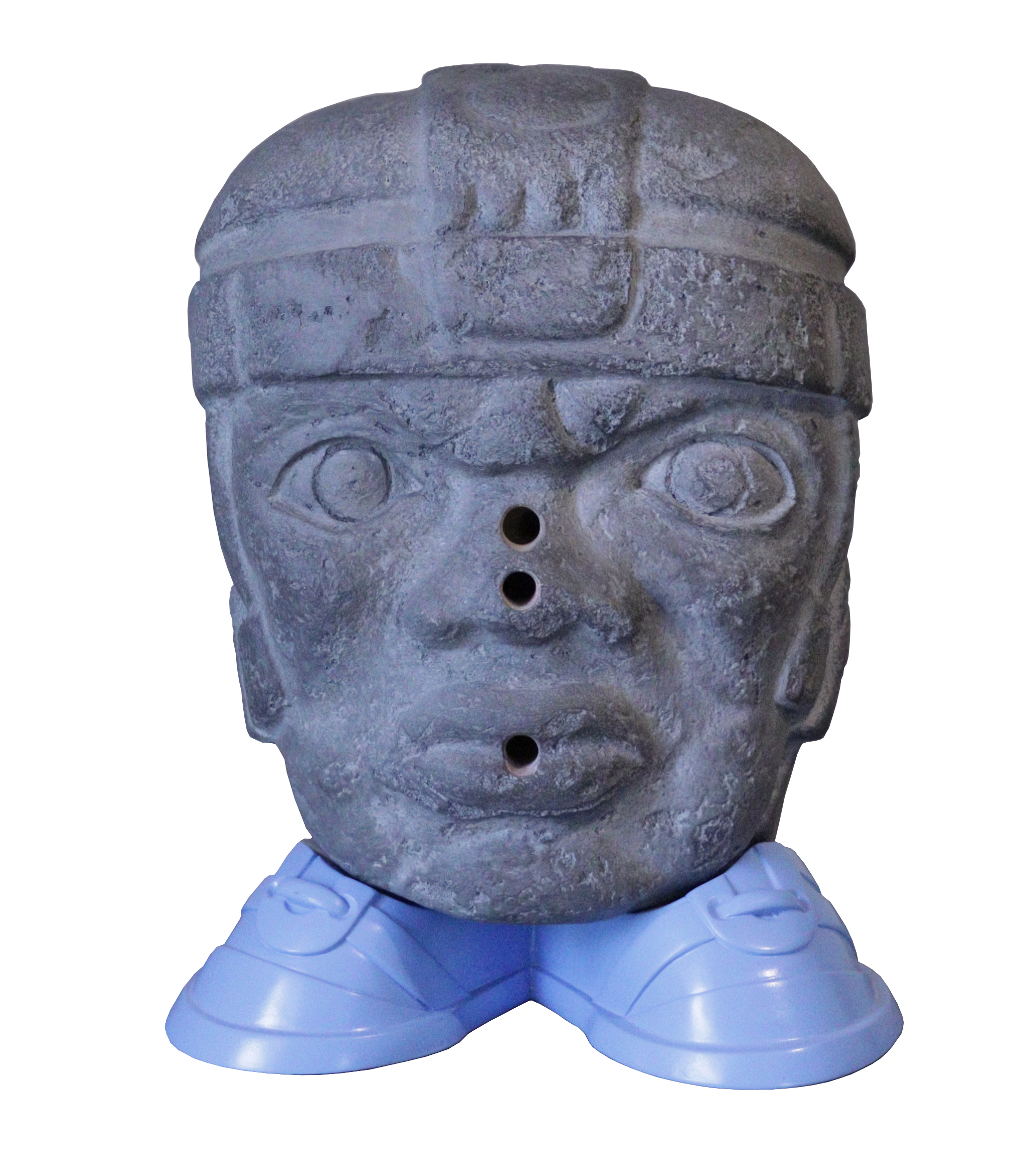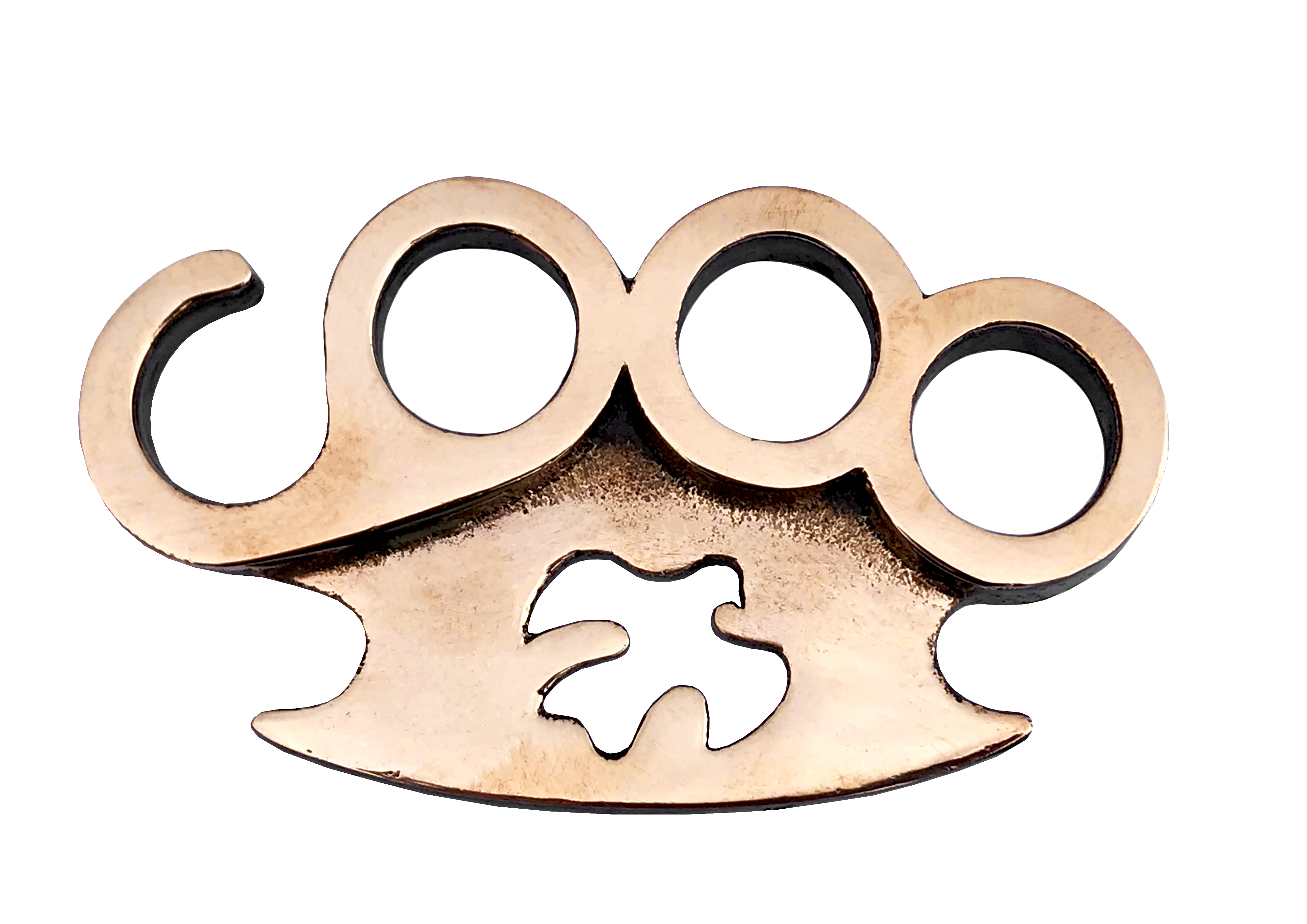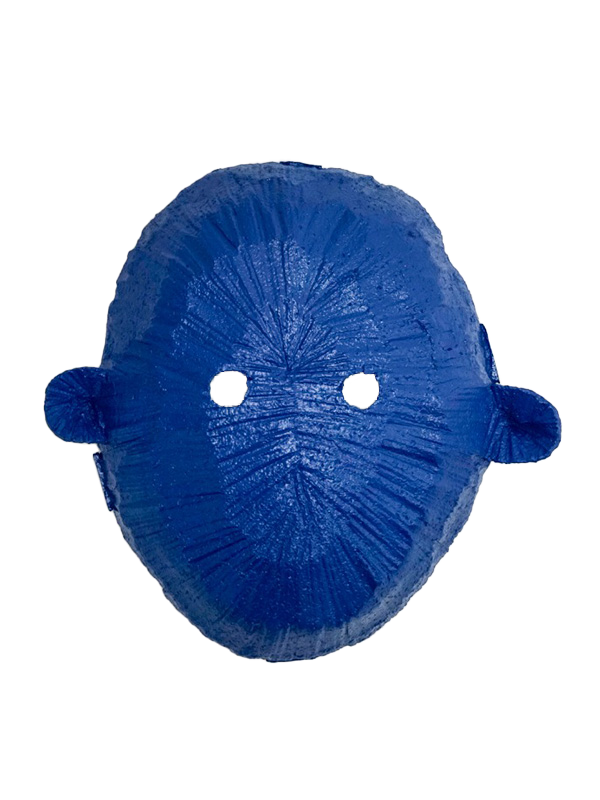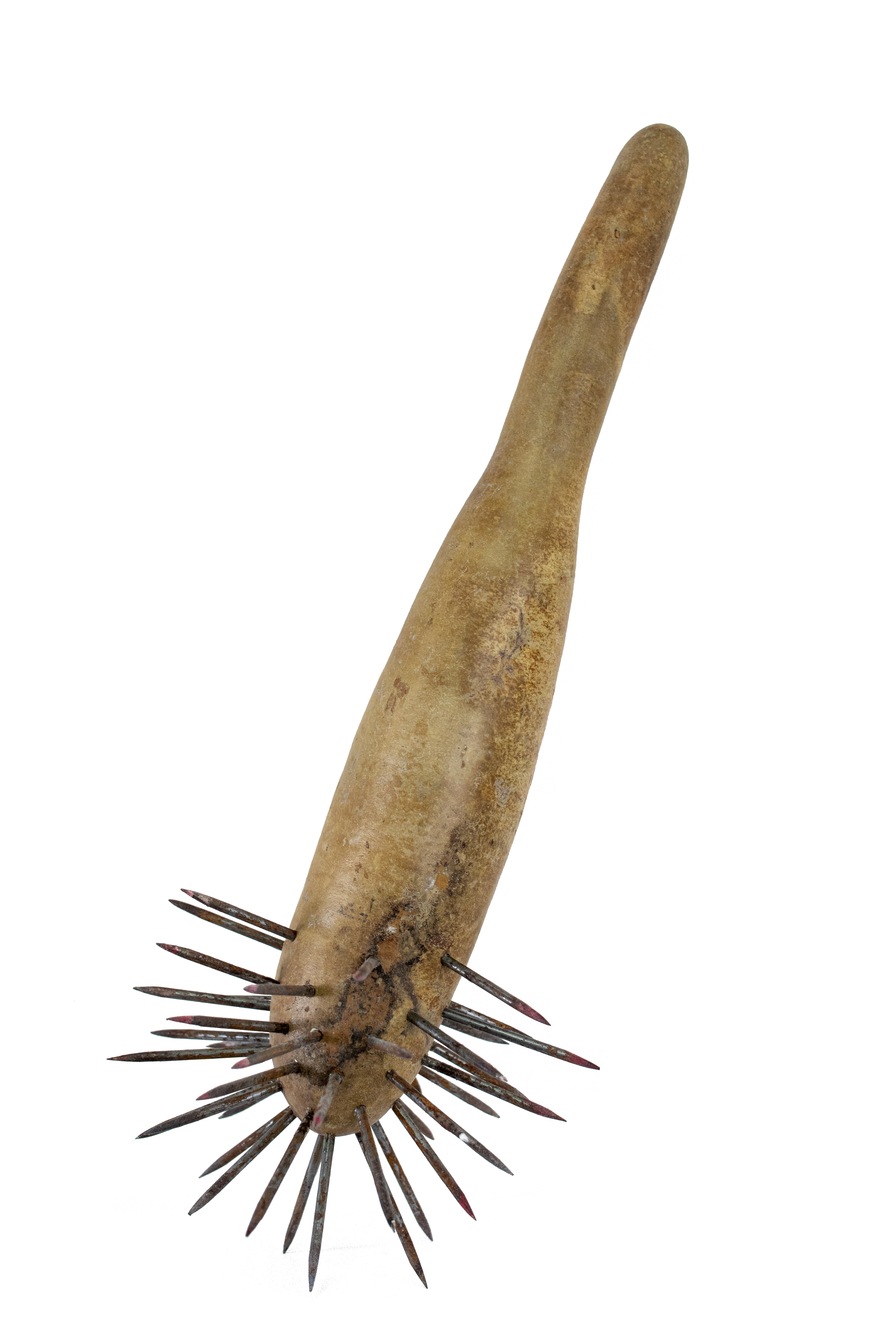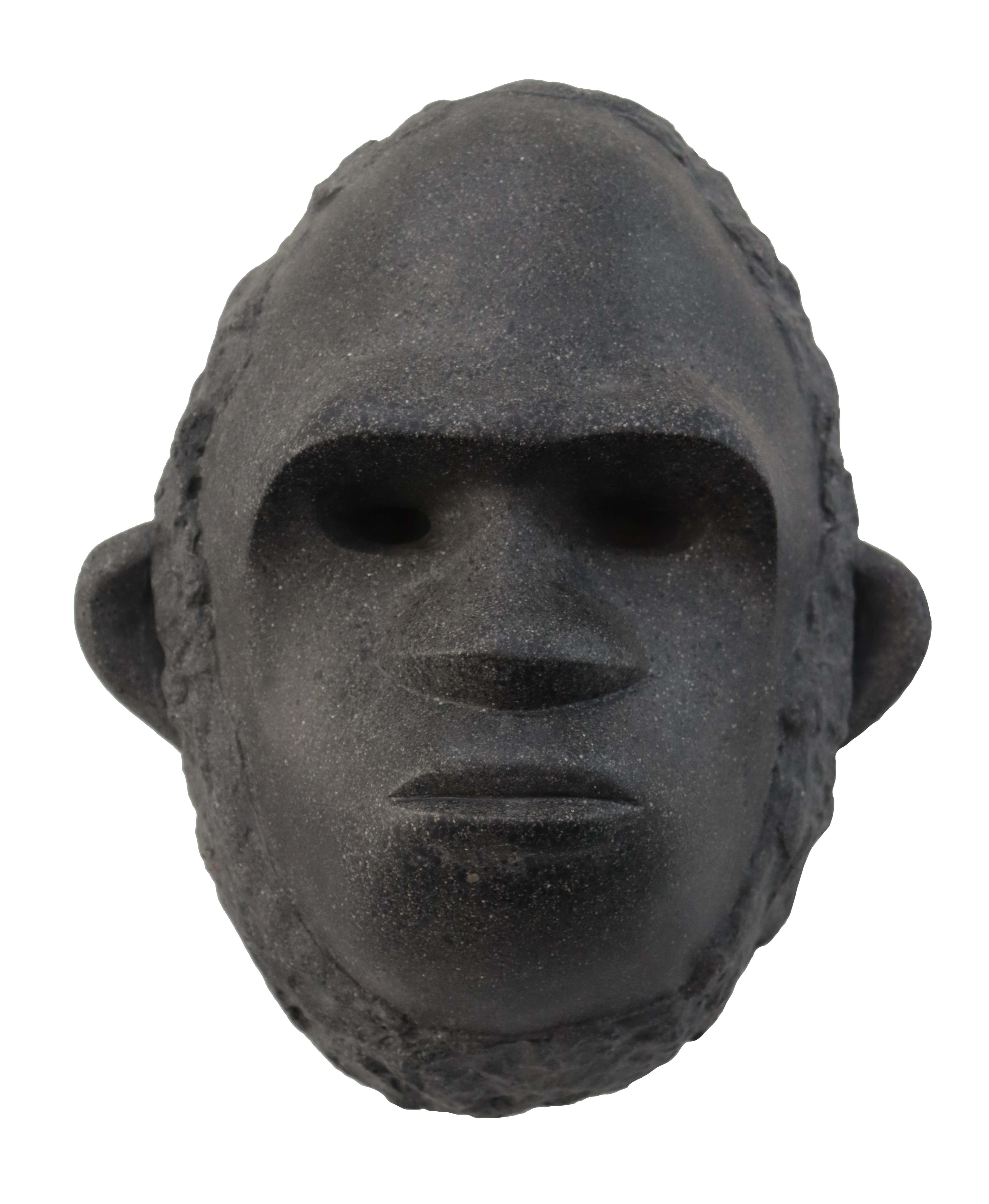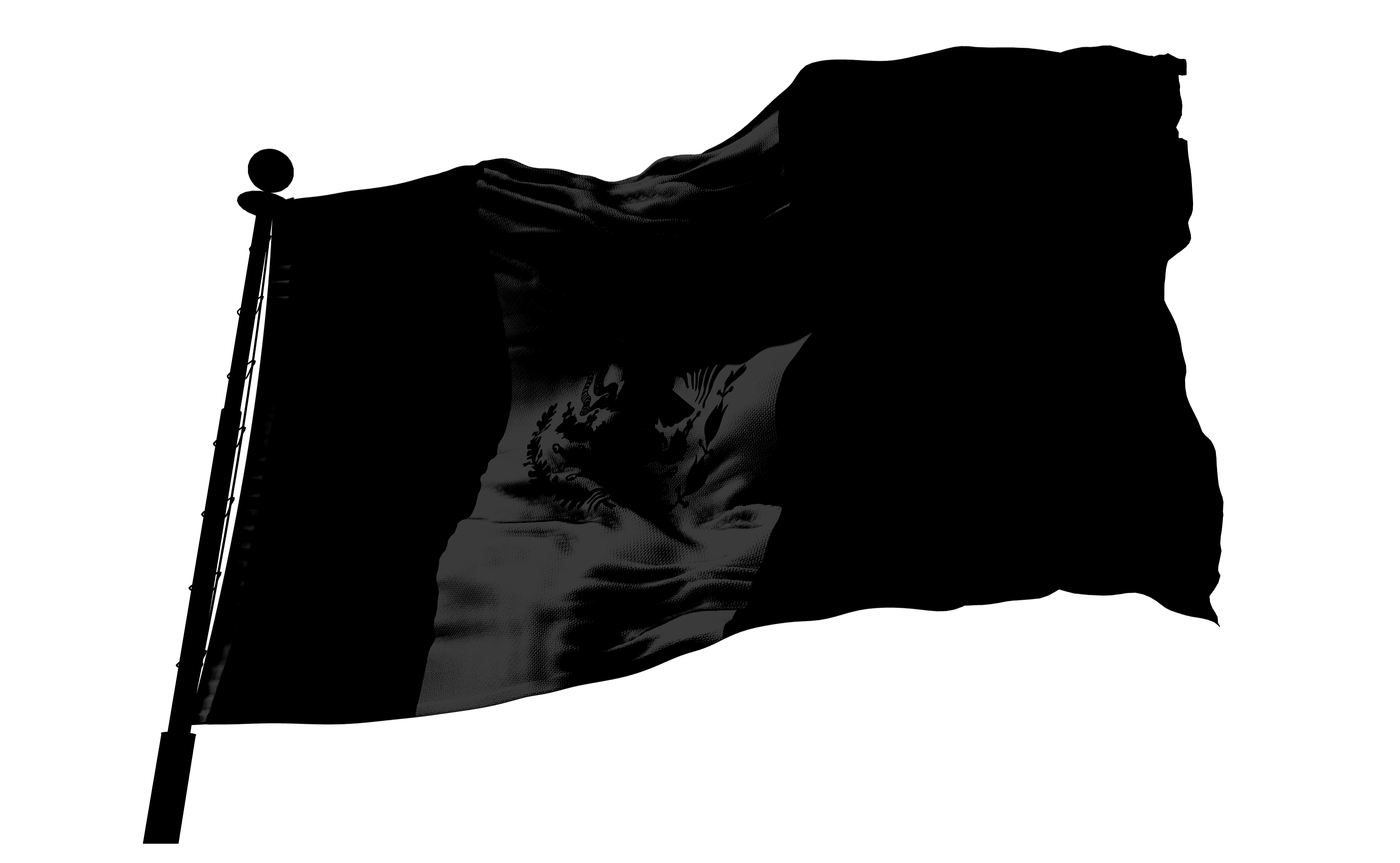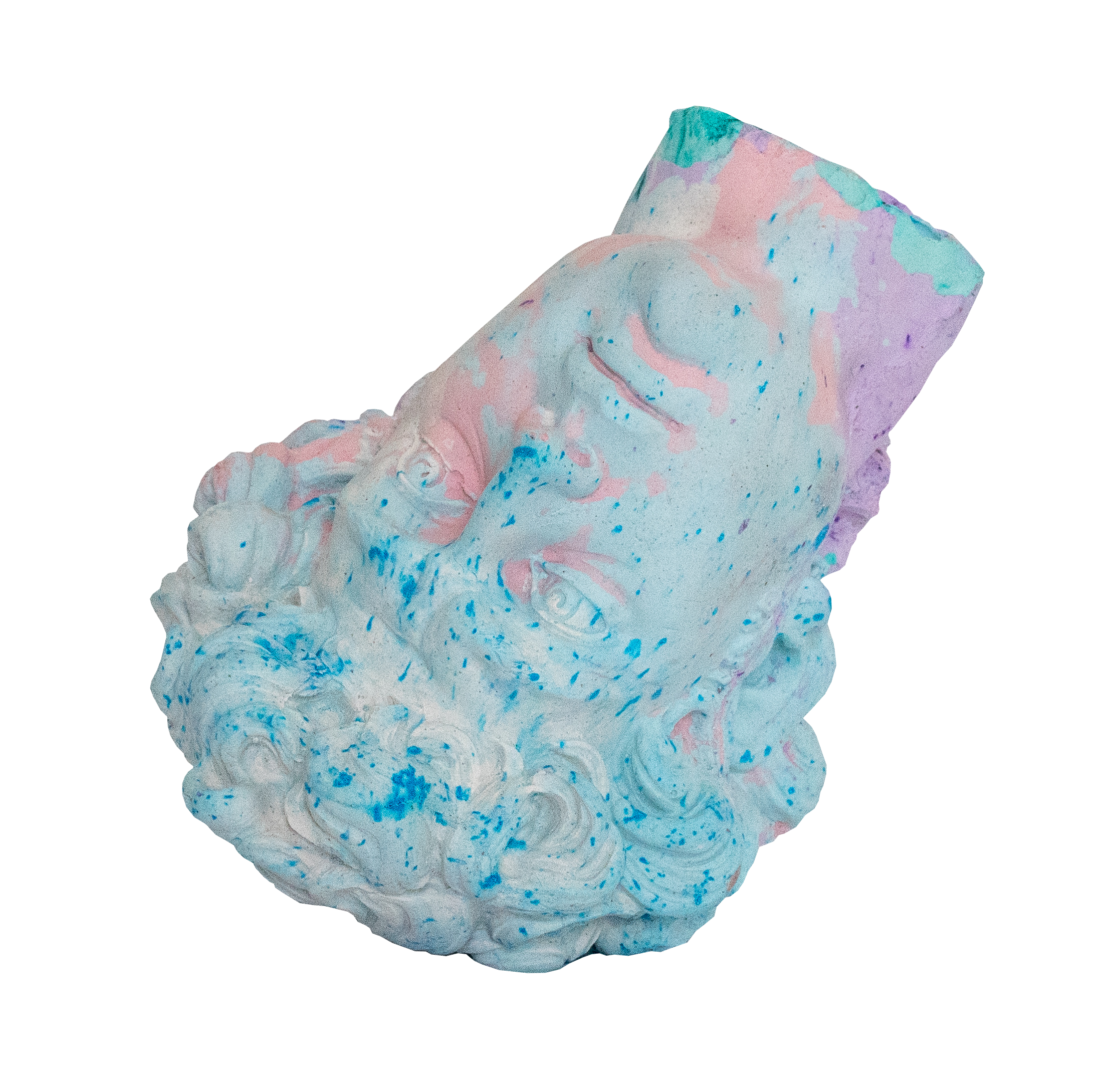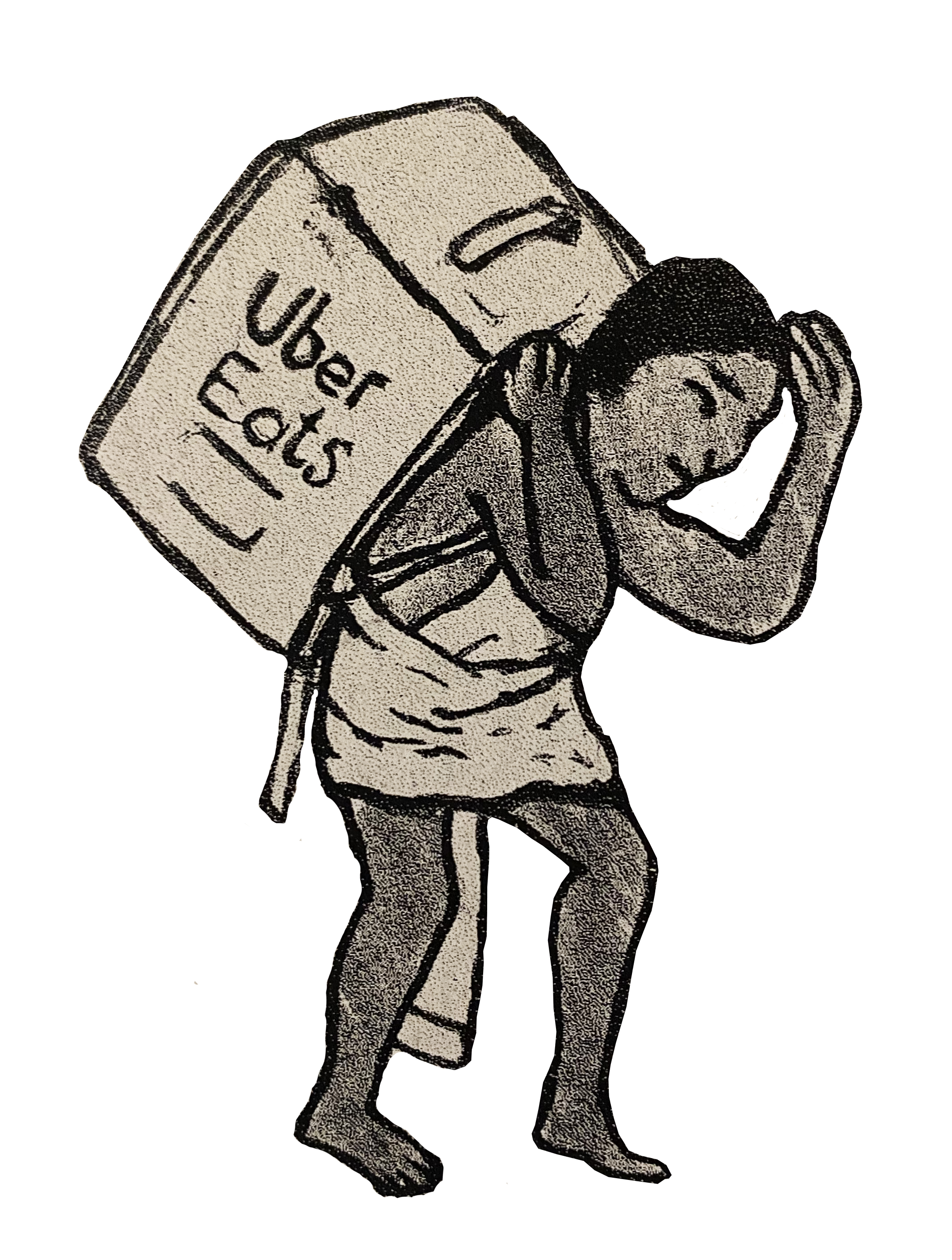El fin de una era
Febrero 2020 - Casa Santa María, Fundación Casa Wabi, CDMX
ESP
El fin de una era es la primera exposición individual de Chavis Mármol, que se llevó a cabo en Casa Santa María de Fundación Casa Wabi durante febrero de 2020. La muestra consistió en siete piezas construidas con barro, piedra, metal y concreto, que representan diferentes herramientas (en un amplio sentido), tres máscaras de simio y una escena en la que dos miniaturas —un simio y una serpiente— interactúan mutuamente.
Las diferentes materias que constituyen las piezas nos hablan, por un lado, de los diversos estadios de desarrollo tecnológico humano: cada una de ellas conlleva relaciones más o menos inmediatas con el cuerpo de quien las produce, siendo algunas de fabricación directa, es decir dependientes casi exclusivamente del tacto y de la vista (es el caso del modelado en barro), mientras que otras implican el uso de diversos materiales y herramientas en procesos de mayor complejidad (como es el caso del vaciado en concreto). Por otro lado, las figuras que estas materialidades erigen también hacen alusión a la historia evolutiva de la técnica: se podría imaginar una línea cronológica sobre la cual se ordenaran las piezas comenzando por las representaciones de simios y otros animales, siguiendo con las herramientas incorporadas al cuerpo (dientes, mandíbulas, manos), las herramientas externas al cuerpo pero que no han sido modeladas (huesos); herramientas de piedra pulida (mesa de trabajo); herramientas metálicas que implican la modificación del material mediante altas temperaturas (mazos y trampa); finalmente la ametralladora que significa una sumatoria de muchas y muy complejas tecnologías. Finalmente, estas piezas —en su mayoría armas— nos hablan de la avanzada, en simultáneo, de las capacidades de ejercer violencia.
Escribió Joseph Weizenbaum: “La herramienta como símbolo trasciende su rol como medio práctico para un fin determinado y es un elemento constitutivo para la recreación simbólica del mundo por parte de las personas”. Así, lejos de querer ilustrar el discurso homogeneizador según el cual toda tecnología “primitiva” es un estadio anterior a una tecnología “avanzada”, y toda sociedad humana “progresa” según va desarrollando tecnologías más complejas, Chavis busca, a través del uso consciente de la materia al representar estos símbolos, por un lado diseccionar este relato para poner en evidencia estos juicios y, por otro lado, modelar una identidad particular usando estos elementos generalizadores como materia prima.
ENG
"The End of an Era" is Chavis Mármol's first solo exhibition, which took place at Casa Santa María in Fundación Casa Wabi during February 2020. The exhibition consisted of seven pieces constructed with clay, stone, metal, and concrete, representing different tools (in a broad sense), three monkey masks, and a scene in which two miniatures - a monkey and a snake - interact with each other.
The different materials that make up the pieces speak to us, on the one hand, about the various stages of human technological development: each one involves more or less immediate relationships with the body of the person producing them, some being directly fabricated, that is, almost exclusively dependent on touch and sight (as is the case with clay modeling), while others involve the use of various materials and tools in more complex processes (as is the case with concrete casting). On the other hand, the figures that these materialities create also allude to the evolutionary history of technique: one could imagine a chronological line on which the pieces were ordered starting with representations of monkeys and other animals, followed by tools incorporated into the body (teeth, jaws, hands), tools external to the body but not modeled (bones); polished stone tools (workbench); metal tools that involve the modification of material through high temperatures (mallets and traps); and finally, the machine gun, which represents a sum of many complex technologies. Finally, these pieces - mostly weapons - speak to us of the simultaneous advancement of the capacity to exert violence.
Joseph Weizenbaum wrote: "The tool as a symbol transcends its role as a practical means to a specific end and is a constituent element for the symbolic recreation of the world by people." Thus, far from wanting to illustrate the homogenizing discourse according to which all "primitive" technology is a previous stage to "advanced" technology, and all human society "progresses" as it develops more complex technologies, Chavis seeks, through the conscious use of material in representing these symbols, on the one hand to dissect this narrative to highlight these judgments, and on the other hand to model a particular identity using these generalizing elements as raw material.
Febrero 2020 - Casa Santa María, Fundación Casa Wabi, CDMX
ESP
El fin de una era es la primera exposición individual de Chavis Mármol, que se llevó a cabo en Casa Santa María de Fundación Casa Wabi durante febrero de 2020. La muestra consistió en siete piezas construidas con barro, piedra, metal y concreto, que representan diferentes herramientas (en un amplio sentido), tres máscaras de simio y una escena en la que dos miniaturas —un simio y una serpiente— interactúan mutuamente.
Las diferentes materias que constituyen las piezas nos hablan, por un lado, de los diversos estadios de desarrollo tecnológico humano: cada una de ellas conlleva relaciones más o menos inmediatas con el cuerpo de quien las produce, siendo algunas de fabricación directa, es decir dependientes casi exclusivamente del tacto y de la vista (es el caso del modelado en barro), mientras que otras implican el uso de diversos materiales y herramientas en procesos de mayor complejidad (como es el caso del vaciado en concreto). Por otro lado, las figuras que estas materialidades erigen también hacen alusión a la historia evolutiva de la técnica: se podría imaginar una línea cronológica sobre la cual se ordenaran las piezas comenzando por las representaciones de simios y otros animales, siguiendo con las herramientas incorporadas al cuerpo (dientes, mandíbulas, manos), las herramientas externas al cuerpo pero que no han sido modeladas (huesos); herramientas de piedra pulida (mesa de trabajo); herramientas metálicas que implican la modificación del material mediante altas temperaturas (mazos y trampa); finalmente la ametralladora que significa una sumatoria de muchas y muy complejas tecnologías. Finalmente, estas piezas —en su mayoría armas— nos hablan de la avanzada, en simultáneo, de las capacidades de ejercer violencia.
Escribió Joseph Weizenbaum: “La herramienta como símbolo trasciende su rol como medio práctico para un fin determinado y es un elemento constitutivo para la recreación simbólica del mundo por parte de las personas”. Así, lejos de querer ilustrar el discurso homogeneizador según el cual toda tecnología “primitiva” es un estadio anterior a una tecnología “avanzada”, y toda sociedad humana “progresa” según va desarrollando tecnologías más complejas, Chavis busca, a través del uso consciente de la materia al representar estos símbolos, por un lado diseccionar este relato para poner en evidencia estos juicios y, por otro lado, modelar una identidad particular usando estos elementos generalizadores como materia prima.
ENG
"The End of an Era" is Chavis Mármol's first solo exhibition, which took place at Casa Santa María in Fundación Casa Wabi during February 2020. The exhibition consisted of seven pieces constructed with clay, stone, metal, and concrete, representing different tools (in a broad sense), three monkey masks, and a scene in which two miniatures - a monkey and a snake - interact with each other.
The different materials that make up the pieces speak to us, on the one hand, about the various stages of human technological development: each one involves more or less immediate relationships with the body of the person producing them, some being directly fabricated, that is, almost exclusively dependent on touch and sight (as is the case with clay modeling), while others involve the use of various materials and tools in more complex processes (as is the case with concrete casting). On the other hand, the figures that these materialities create also allude to the evolutionary history of technique: one could imagine a chronological line on which the pieces were ordered starting with representations of monkeys and other animals, followed by tools incorporated into the body (teeth, jaws, hands), tools external to the body but not modeled (bones); polished stone tools (workbench); metal tools that involve the modification of material through high temperatures (mallets and traps); and finally, the machine gun, which represents a sum of many complex technologies. Finally, these pieces - mostly weapons - speak to us of the simultaneous advancement of the capacity to exert violence.
Joseph Weizenbaum wrote: "The tool as a symbol transcends its role as a practical means to a specific end and is a constituent element for the symbolic recreation of the world by people." Thus, far from wanting to illustrate the homogenizing discourse according to which all "primitive" technology is a previous stage to "advanced" technology, and all human society "progresses" as it develops more complex technologies, Chavis seeks, through the conscious use of material in representing these symbols, on the one hand to dissect this narrative to highlight these judgments, and on the other hand to model a particular identity using these generalizing elements as raw material.

